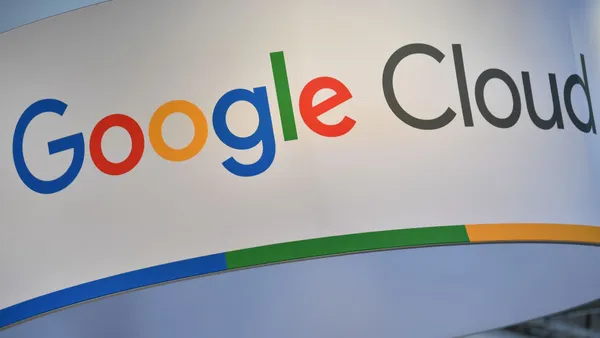Marriott broke ground earlier this month by launching the hospitality industry’s first media network. It is unlikely to be the last hotel owner to do so, and marketers shouldn’t be surprised if other sectors, from airlines to financial services, chase the same early-mover advantage in the months ahead.
The demand for first-party data isn’t going anywhere with the death of cookies looming in 2023. Companies that own reams of personally identifiable information derived from digital properties like apps and websites are wizening up to the fact that those assets are very monetizable. As in, break out a new revenue segment monetizable. But as these media networks proliferate and scale, questions arise as to whether they’re lessening complexity for brands or simply adding another layer in a landscape that’s already notoriously hard to navigate. Marketers faced with a surfeit of options might get pickier in their choice partners and more demanding of transparency, narrowing the playing field.
“In the wake of third-party cookies disappearing, companies that have a lot of first-party transaction or sales data and customer data really understand that's a true source of competitive advantage,” said Julie Jeancolas, global head of media and customer engagement solutions at Dunnhumby. Dunnhumby works with Walmart, one of the leading retail media players, on a customer data-sharing platform called Luminate.
“Any sector that has access to addressable first-party data that you can actually then target — and you have the consent of the customer — or any sector that has a large media estate can build a retail media network,” Jeancolas added.
Retail has set the trend when it comes to media networks, and the pace is staggering. Companies ranging from big-box stores like Walmart and Target to niche and local players are rushing to stand up offerings that combine aspects of ad sales, technology and commerce. Ulta, the beauty brand, unveiled a UB Media network in May, speaking to how category-specific companies are coming around to the idea. Sephora, a rival, was hiring for a position that would help build a similar-sounding platform earlier this year.
Retail media is the fastest-growing segment of media behind only connected TV, according to Michael Harrison, managing partner at Winterberry Group. Spending on retail media in the U.S. alone will double to $40 billion in 2022, according to research from the consultancy. A major factor supporting growth has been the pandemic, which pressured companies to accelerate investments in digital transformation and make the jump to e-commerce and mobile channels. That’s been a rocky journey but provides clear benefits now that all eyes are on first-party data.
“They're riding the wave of everything becoming more digitally-driven,” said Harrison. “The shift to commerce is driving all of these retail media networks or media networks populating. You'll continue to see it.”
Fresh coat of paint
Marriott’s announcement was noteworthy in billing the platform, which draws on the Bonvoy loyalty program comprised of 164 million members, specifically as a “media network” versus a traditional marketing arrangement.
“Marriott has historically sold advertising targeted around the hotel you're staying at,” said Harrison. “They have done that as one-offs or within email, so it's been more like a newsletter rather than a real media network. Now, they have so much traffic to their properties that they own and operate, they can drive media revenue off of that.”
UB Media, which relies on the brand’s Ultamate Rewards loyalty scheme, takes a similar approach. While Ulta has operated a marketing practice for years, this is technically its first retail media network.
Other categories adopting the media network moniker recognize the success that retail has had with the branding and potentially see it as a method of attracting more advertiser dollars. These companies could “reposition, replatform and resell an existing marketing partner or points program or display program into something a little more sophisticated and modern,” said Chris Parker, founder and managing partner at the ad agency Scrum50.
"The more interaction you have with the customer, the more you learn about them, the more you capture their preferences and the more you can personalize."

Julie Jeancolas
Global head of media and customer engagement solutions, Dunnhumby
That’s not to say all media network rollouts are simply slapping a fresh coat of paint on old goods. Marriott Media Network brings a full tech-stack collaboration with Yahoo, leveraging its sell-side and demand-side platforms.
Still, it’s not hard to see other businesses taking stock of their marketing products and using the media network boom as an opportunity to unify and expand them. Mastercard in 2019 acquired the customer data platform SessionM to improve its marketing personalization and loyalty program. Car-trading marketplaces like Carvana and Cars.com could feasibly hawk media to insurance providers or ancillary companies, per Harrison. Even intermediary platforms like Instacart and GoPuff are ironing out ways to integrate more advertising into their properties.
“Airlines will be the next ones to go, because you have so much data and you know where people are going, and then financial services,” said Harrison. “They're all working toward building this infrastructure where they can sell media.”
Point of differentiation
Retail may be the model to follow in establishing a media network, but some pages of the playbook may be easier to copy than others. Greener industries dipping their toes into the space must consider what types of data they wield, whether that data is addressable and what kinds of activations are actually going to appeal to their target advertisers, experts said.
“The more interaction you have with the customer, the more you learn about them, the more you capture their preferences and the more you can personalize,” said Dunnhumby’s Jeancolas.
This setup benefits businesses like grocery stores that people visit on a regular basis and where they tend to buy the same things repeatedly. It isn’t necessarily something that translates to hospitality, barring special cases like business travel.
“If you look at a Tesco or Target or Kroger, they have those frequent interactions with customers. Marriott doesn't. I don't think you visit a Marriott every day or every week,” said Jeancolas. “How [is Marriott] going to enhance their understanding of their customers, their loyalty database?”
"There's going to have to be some sort of shift toward transparency... which of the big retail networks is the first to crack?"

Michael Harrison
Managing partner, Winterberry Group
Data alliances with complementary brands are one potential solution, according to Jeancolas. Tie-ups like Marriott’s with Yahoo are at the same time indicative of how many brands will rely on outside tech assistance to get their media networks off the ground.
“You'll see very similar partnerships to Yahoo-Marriott,” said Scrum50’s Parker.
“Even as sophisticated or progressive as Marriott has been in relation to digital, they recognize that this is an ever-changing, slippery, politically-charged technology,” Parker added. “They would rely on somebody with the wherewithal both from a scale perspective and an experience perspective and, frankly, someone they can turn to if something goes wrong.”
Working with third-party solutions providers could also be integral to aspects of running a media business like campaign measurement and managing marketing channel mix. Retailers thrive on the pitch around “closed-loop” measurement: They can serve an ad for Coca-Cola, measure foot traffic in stores and then track whether someone actually makes a purchase via point-of-sale. That’s a markedly different structure than, say, running a hotel.
“It would be more around driving awareness or consideration, maybe less around sales,” said Jeancolas of how hospitality media networks might operate. “It's very different accountabilities than, obviously, a grocery store.”
Mounting frustrations
Broader adoption of the media network concept also arrives as some of the honeymoon phase wears off for retailers. For one thing, the sheer number of retail media networks may be nearing a saturation point. Brands are naturally going to gravitate toward the platforms that deliver the widest reach and most bang for their buck. Increasingly, those look like a lot of the same names that have dominated brick and mortar and e-commerce to date.
“Brands or agencies, especially, will try to find the platforms that give them access to the maximum amount of inventory available,” said Jeancolas. “There will be some consolidation.”
How retailers keep brands in their ecosystems has occasionally proved frustrating as well. Retail media networks are frequently promoted as a break with digital advertising’s long-standing walled gardens of Google and Facebook. Marketers have made clear that these alternatives can be just as opaque. With media networks becoming a larger portion of retail growth strategies, they may also become mandated spending allotments for CPG partners versus a nice add-on to have.
“Six months, a year ago people were talking about Walmart Connect and Kroger and [Target’s] Roundel as a way to grow sales,” said Harrison. “Now, you're starting to hear them talk about it as a tax and that it's trade promotion masked in a retail media network.”
While that's a potential warning sign for new media network entrants, it also suggests they have an opportunity to shake up the model in substantive ways.
“There's going to have to be some sort of shift toward transparency,” said Harrison. “What will be interesting is, which of the big retail networks is the first to crack? Once one does it, it would seem that all of them would.”
Correction: A prior version of this story misstated the year of Winterberry Group's projections for retail media spending in the U.S. The forecast is for 2022.























